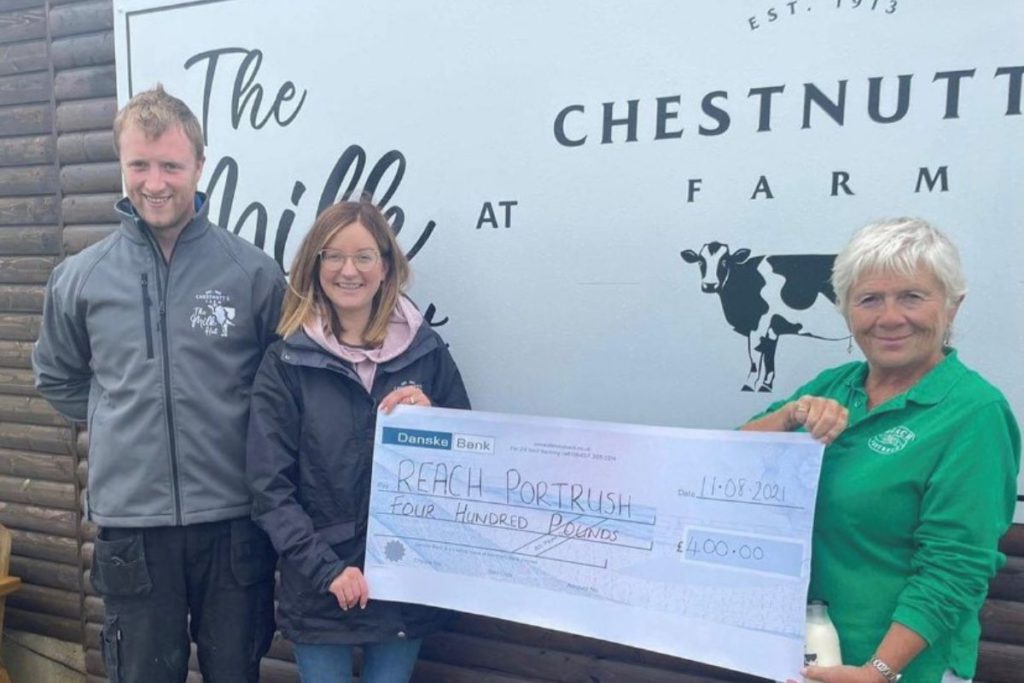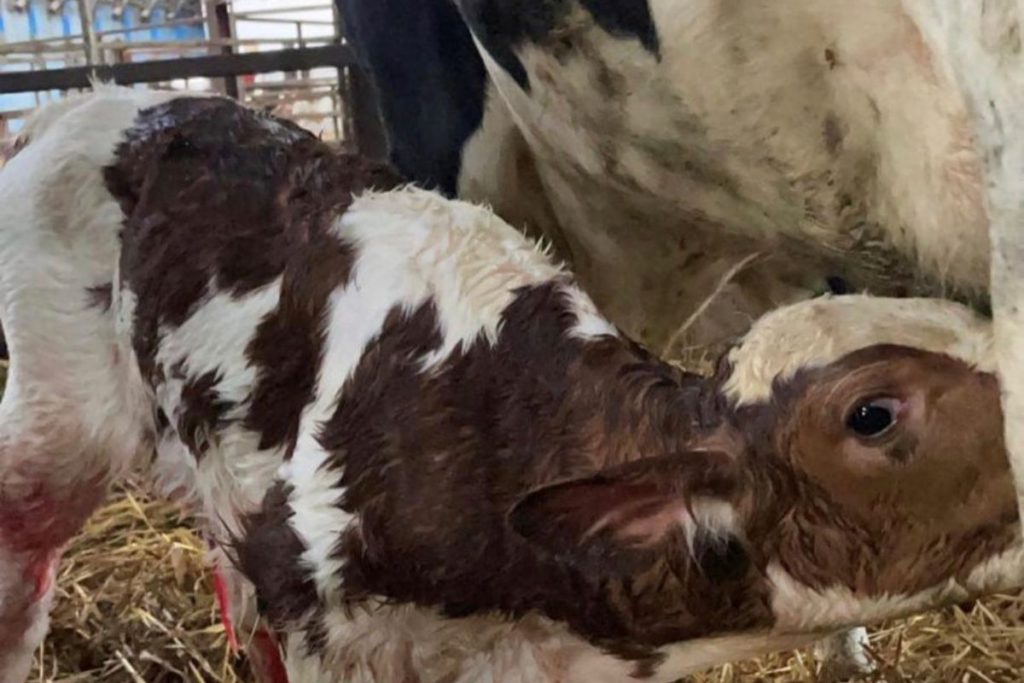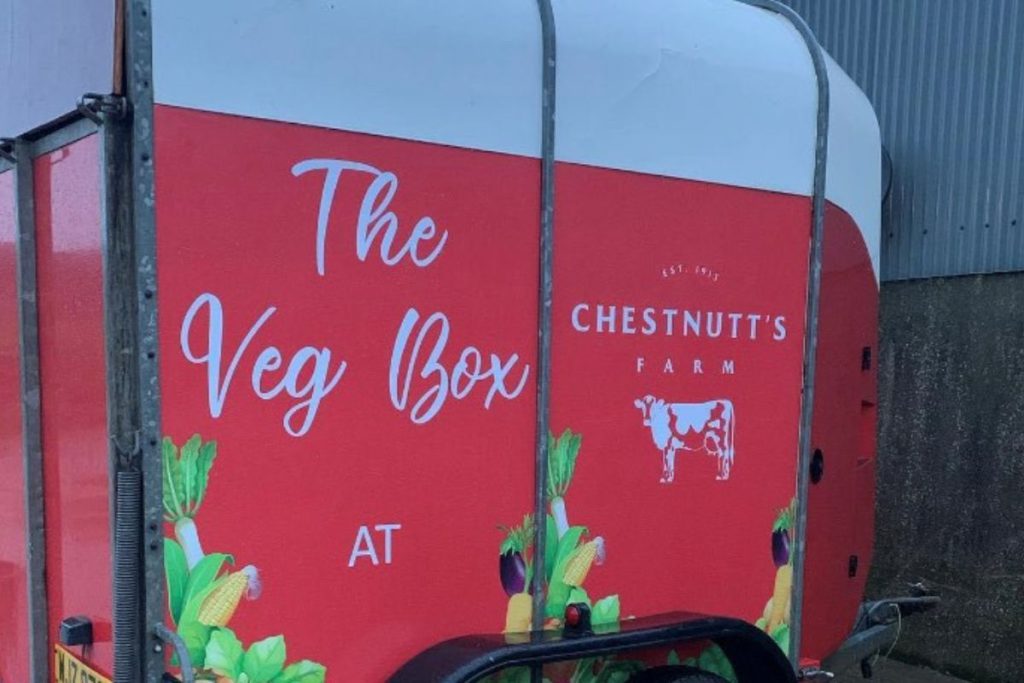In this week’s Farmer Focus series, That’s Farming, speaks to William and Alison Chestnutt, of Chestnutt Farms, about their dairy enterprise, as well as their new milk vending venture. They discuss their journey from being a sole dairy operation to putting their ideas into reality with their newest business adventure, The Milk Hut.
Chestnutt Farms is just outside Portrush, along the scenic Causeway Coast. William runs the dairy enterprise alongside his parents.
On the other hand, the latest addition to the empire, The Milk Hut, is a business William and his wife, Alison, established.
With the couple both having a keen interest in food production and agriculture, William returned home to farm following his graduation in Newcastle Upon Tyne.
His wife, Alison, joined the farm through her keen interest in the milk vending business.
Chestnutt Farms
At present, the Causeway Coast farm sees 270 cows go through the parlour, which is the maximum number of cows yielding “comfortably” in the parlour.
Due to natural fluctuations, the herd has reduced back to 255/260 in the past but has now reached maximum capacity.
With the number of cows present, calving takes place in September.
“We start calving in September, with 200 calved in October,” they told That’s Farming.
They generally keep heifers bred on the farm as replacements. Further on, they calf down at two-years-old.
“Having the calves all born around the one time allows us to prepare a batch of heifers prepared to be AI’d and calving together at two years of age.”
William stresses the importance of fertility, which is a firm measure they have on their farm to allow for a reduced calving interval.

Researching a sustainable breed
Following a visit to Denmark in 2016, the Northern Ireland-based farmers decided to integrate Viking Holstein genetics into the herd.
“We have always milked Holsteins; however, I have found that unfortunately, they have been lacking in longevity, as well as hardiness.”
The present genetics on the farm involves a three-way cross between the Holstein, Coopex Montbeliarde, as well as Viking Red.
The 3-way cross is also known as ProCROSS. This is a 3-breed rotational crossbreeding system, combining Viking Holstein, Viking Red and Coopex Montbeilarde.
By combining these three breeds, you are producing a cow which is:
- Healthy, fertile, medium-sized which is long-lasting as well as easy to manage;
- Cows with a +9% daily profit compared to purebred Holstein, according to the Viking Genetics breeding research;
- Cows that generate optimum results with an average heterosis of 86%;
- No worries about inbreeding.
Minimal grazing management
Grassland management is not a huge focus on Chesnutt’s Farm, in terms of grazing cows.
“We had been zero grazing for around seven years or so. However, in the last year, we aim to get the cows out to grass around mid-April.”
Up until last year, the farm operated on a full zero-grazing practice. This is primarily due to the geography and topography of the land along the coast.
“As our farm runs close to the coast, it is heavy land, delaying the date that we can let cows out to graze.”
The farm sustainably produces silage, whole crop, as well grain for feeding purposes.
Less input, equal quality
William emphasises the traits that he searches for when retaining his replacements.
“My ideal cow-type has a yield of 9,000 litres, good legs and feet. Fertility is very important for the purpose of batch calving.”
“We need something that is easy to go into calf, as well as easy to manage.”
According to William, cows are currently producing milk of 4.1% fat and 2.4% protein, averaging around 32 litres.
The cows are maintaining the yield with less input. This is also an added benefit from the ProCROSS breeding which is integrated into the herd.
Dairy-beef enterprise
The farm also operates a small-scale dairy beef system, keeping between 30 to 50 batches of beef-bred calves.
While they retain heifer calves suitable for milk production as replacements, they sell some to local dry stock farmers for beef production.
Sexed semen is a useful tool that they use as part of the farm’s breeding programme, with Belgian Blue and Angus bulls.
Luckily, Chestnutt’s farm is in a prime area, where there is also a market for dairy-beef animals.

The Milk Hut
The Milk Hut is an added enterprise to the already-busy dairy farm. The husband and wife team have always been interested in diversifying their farm; it was just a matter of finally “taking the plunge”.
With the North Coast already being a prime tourist destination, they decided to put the plans into place last year to create their milk vending enterprise.
Alison has all hands-on-deck and explains the importance of everything that goes on behind the scenes to ensure that The Milk Hut runs smoothly.
“The cows are milked in the morning, following this, we pasteurise milk for the milk hut every other morning. The Milk Hut is equipped with self-service vending machines, which are all stocked daily.”
The Milk Hut serves customers with wholesome milk, eggs, hot chocolates, teas and coffees, and fresh, home-grown vegetables.
Daily, Alison conducts routine checks over the running of The Milk Hut, ensuring the machines are topped up with fresh milk.
Alison also manages their brood of 40-hens, which also produce fresh eggs for local consumers.
The Chestnutt’s latest enterprise has certainly been successful thus far, and they also assure that 2022 has bigger and better plans.

To share your story email – [email protected]
See other Farmer Focus profiles.





